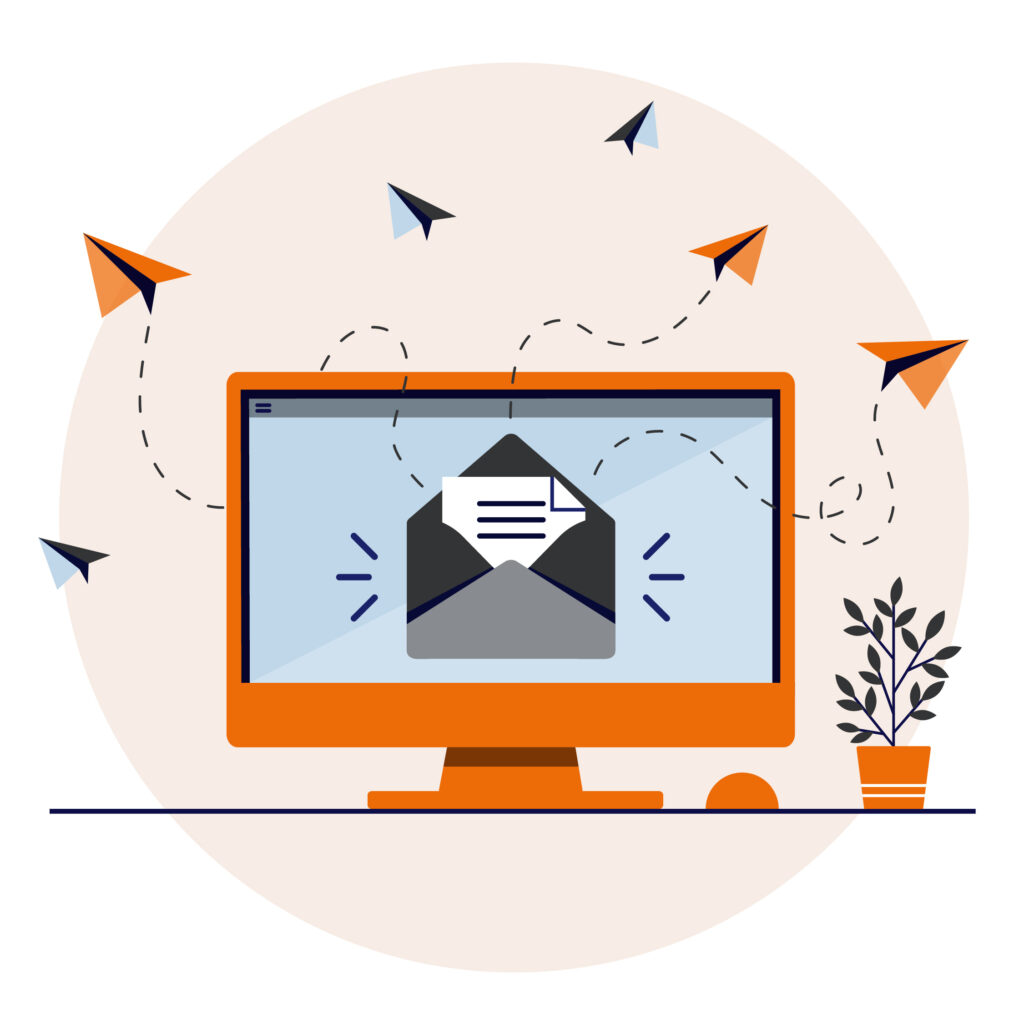


With optimism creeping back, exhibitors face yet another challenge – getting match-fit to resume the new-style event circuit. Here are some top tips to pump up those trade show muscles.
We don’t need to restate the trauma that countless businesses across the globe have undergone but we’ll mention one telling statistic issued by UFI – the Global Association of the Exhibition Industry: 500 trade shows cancelled. This adds up to around $26bn of lost income.
Harder to quantify and even more significant, however, is the negative impact on sales leads caused by the dearth of trade exhibitions. Now, with fresh hope on the horizon, it’s essential to make up for lost ground. These suggestions can help you plan for a successful comeback.
Having a virtual version of a physical exhibition isn’t new – museums and art galleries like the J. Paul Getty Museum in Los Angeles, have employed the idea successfully for some time.
But, with a few exceptions, the use of virtual technology in the trade show world was fairly sporadic until the onset of the pandemic when many ‘locked-down’ organisers, who had never previously embraced the art, scrambled to put their events online with mixed success.
After a faltering start, virtual technology has developed at pace over the last 12 months and is taking its place as a valid marketing opportunity that does not replace physical events but positively complements them. Hence the preference for the term Hybrid – which embraces both forms.
As with ‘real’ events, organisers on the event circuit selling virtual space, work to attract exhibitors and generate audiences just as they would in the physical world. In a virtual show, exhibitors have their stands or booths, and they can promote their products and services via a diverse range of content including video, downloads, product photos and presentations. Live-chat is also a standard feature, enabling two-way discussion and on-the-spot collection of enquiries.
Exhibitors will usually have the ability to host webinars during the event and all of this content provides the organiser with ammunition when it comes to promoting the usefulness of the event to visitors. In common with a physical show, you need to be satisfied that the event will be promoted actively before you confirm your place. Always remember that high quality prospects are the ‘product’ an organiser is actually selling you. Everything else is bells and whistles.
Packages suitable for the event circuit offered to by organisers will vary depending on the software provider they’ve engaged for the event. But organiser packages aren’t the only game in town. There is growing scope for exhibiting companies to enhance their online and virtual presence with their own customised virtual platform. At CDI World, for example, we offer clients the facility to ‘bolt-on’ a virtual stand to their physical build, enabling them to reach key clients who can’t attend a live event.

Email marketing may be long-established but it still packs a uniquely powerful punch and now is the perfect time to revive your e-shot schedule.
Keeping in touch with clients and prospects is essential, and while a few of your contacts may still be furloughed, others will be working from home and may even have time to read their email. So, take advantage of that fact, without abusing it.
Use the interval before shows return to build rapport with the people you most want to serve. How do you that? Send them interesting and helpful messages. Now is the moment to re-purpose or update posts, polish up reports and whitepapers, and publish new items. This is how your email marketing can be relevant, useful and, above all, read.
Keep in mind that most of the shows you planned to attend haven’t vanished. They’ve either been rescheduled or postponed to later this year or to 2022. When new dates for your postponed shows are confirmed, email your clients and prospects, suggesting they update their calendars with the new dates. This can also be the first step in your pre-show marketing campaign for those events.
Whenever you send out an email burst, include a call to action that encourages response and interaction. And do make sure you promote your releases on social media. As with any other online channel, it’s all about the connections.
Yes – I know it’s not the most thrilling task, but now is an excellent time to fill the holes in your sales database.
If it helps, tell yourself those holes are costing you money every time you email your list because key individuals within businesses you’d like as clients are not receiving your messages. That means they’re not receiving your content, nor will they receive invitations to trade shows, conferences and any events you might organise in the future.
Just a little research will allow you to fill in the missing email fields and job titles and to update or delete the bounces. This will make your list more responsive and make it a more useful asset for your sales team.
And while you’re in the mood…
Enforced downtime provides an excellent opportunity to review progress with leads and enquiries gathered from your most recent exhibitions and events.
During the lockdown, it’s been hard to reach people by phone, especially if they are working from home. Regardless, do whatever you can to keep hot leads hot and to warm-up those that might have forgotten your business since the show.
A good starting point is to update your lead tracker, adding the follow-up work done to date. It should allow you to make a report that ranks leads by their value and urgency. It’s a way to see quickly where your show leads stand in the sales process.
Your system should enable you to identify:
And if you’re still feeling analytical…

There’s a longstanding view in some circles that it’s impossible to measure what you get from exhibiting. We respectfully disagree. In fact, with efficient reporting and tracking, you could be on your way to trade show sales superstardom as someone who knows how to build sales and win clients for your business.
Most important of all, you will also be able to demonstrate what it costs to generate leads and sales from trade show participation. Here’s how. Start by taking time to record results from all recent events. The objective is to rank performance based on:
To identify your cost per lead, divide the number of leads collected into the total cost for the show. For example, £5,000 spent divided by 50 leads = £100 per lead. To identify the cost per sale, divide the number of sales confirmed into the total cost for the show. For example, £5,000 spent divided by 10 sales = £500 per sale.
When it comes to sales made at a show, the other vital element to record is their total value. Ten sales at one event may equal £25,000 while at another they may total £50,000. These values will be important when it comes to ranking event performance.
To judge events by the number of leads you take away is helpful but not the whole story. It’s also vital to see conversion rates. What you need to identify are the events where a higher percentage of leads turn into orders. One event may generate more leads than another, but the other event’s conversion of leads to sales may be higher.
Within this mix, you also need to note which event’s sales were the highest irrespective of the conversion rate. When you have that data, you can explore why one event might have outperformed another. You can also start to rank events based on leads collected, leads converted, and total sales won versus the cost of exhibiting.
Detective-like thinking is required when making your assessment as different factors can affect your event results. These could include:
You may also find that visitors to one show produce higher value first-time orders than those at another. There may be differences in the speed in which orders close. Some events may provide high numbers of leads but convert poorly. These are all things you can only find out by studying your results carefully. The more you study, the more you learn, not just about event performance, but also about your target market and their characteristics.
One of the highest ‘soft’ values trade shows deliver (as opposed to hard leads and sales) is the opportunity to talk in person to buyers. Usually, these are very hard to reach people, shielded by voicemail and often Scrooge-like in their responsiveness. However, get them to a show, and it’s a different story. They open-up and show interest. They want to know about what you offer and how it can benefit them. You move from looking at database entries to seeing and knowing real people.
In the world of online marketing, they often say that content is king. This usually refers to the importance of quality and frequency, but it can also refer to the strategic value of content as part of your marketing approach to all kinds of event.
Joined-up marketing extracts the highest possible value from every asset you possess or invest in, and this includes articles, social media posts and whitepapers that can be linked to webinars and event participation. You may not be the person who writes the copy, but you can map out subject headings and bullet points for the person who will do the writing.
Whenever businesses commit to a physical exhibition, they think about the materials they will give visitors on the day or send via their follow-up messages. They may also engage in pre-show marketing activity before the event. As always, the goal is to attract people to the show and raise the profile of their brand or business.
Profile raising in this way reaches both the people who attend and many who don’t. Therefore, event participation can be a driver of content creation or the updating of marketing material.
The exciting thing is, you can also use the process in reverse. Create a whitepaper or report about a topical subject and then go and find outlets where you can promote your company’s expertise on the issue. I’m thinking of webinars, online conferences, podcasts and other online channels over and above those you own or control.
In the same way that you would typically have a schedule of events, you can create a programme for content. You probably already do. The twist I’m suggesting is to treat your chunkier pieces of content as ‘events’ to which you can tie the type of online appearances suggested.
This approach enables you to generate event-related leads even when physical exhibitions and conferences are thin on the ground.

Speaking in the conference or seminar programme that runs alongside a show is a valuable additional promotional opportunity for exhibitors. We all know that presentations always take more time than you think to prepare, so here’s a quick reminder of the basics…
A bonus of doing this work is that you will also uncover topics that could work for the webinars, virtual shows or online conferences that are filling some of the space previously occupied by physical events.
Speaking of which…
This is the age of the webinar. Seminars conducted over the internet are popping up all over the web, spurred on by the reduction of physical events. But are they useful in marketing and promoting your event? The answer is yes – if you do them right.
There are two paths to get you started on the webinar track: conduct your own or participate in someone else’s. The latter being the easiest option.
Many show organisers are offering webinars as a means to stay relevant to their audiences until live events return. Trade journals in your market are also likely to be producing webinars. Follow similar steps to those outlined in Suggestion No. 7 and you should be a good candidate for inclusion on a webinar panel.
The other option is to produce your own webinars. Viewed from a technical standpoint, this isn’t too hard. The trickier element is in attracting an audience for your webinar. Again, this doesn’t have to be too difficult, especially if you have a large prospect and contact list.
Webinar technology isn’t one-size-fits-all. These days the choice of webinar software can be overwhelming, so here are a few things to consider:
With the basic technology sorted, it’s time to look at the content. Naturally, it will have to be clear, concise and to the point. That, in turn, means having a well-defined message and picking the right person or persons to deliver it.
You will need to ask yourself some probing questions. For example, is your webinar primarily a sales pitch? If so, you need to tell people that fact during the registration period. If your content is mostly educational with a few sales messages woven into it, then people are more apt to engage and share – the keyword here being ‘few’.
Be realistic. If your 30-minute webinar isn’t billed as a sales webinar and you spend 27 of the 30 minutes on a hard sell with 3 minutes on an educational piece, guess what, most people aren’t going to stick around and listen.
The choice of speaker is always critical. You’ll want someone who’s accomplished at public speaking, knowledgeable about the subject and who can get to the point. And when you’ve found this person, find another. You never know if your first choice is going to come down with stomach flu the morning of the talk.
I would suggest a minimum of two practice runs. The first being unrecorded so that you can get the timings down. Then the second as a dress rehearsal with a full recording (as if you’re doing it live). Then listen to the playback and see what you can improve.
The more you practice, the better it’s going to get. I like having at least two people on a webinar; one as a moderator and one or more to present. It frees up the presenter to focus on the content while the moderator can ensure that everything is running smoothly during the presentation.
As a famous comic once said, timing Is everything, and webinars are no exception. Determining the optimal duration of your webinar is also crucial. Too short and you won’t have enough time to get your message across. Too long and you’re going to lose your audience.
For a fresh webinar programme that is just starting and building its credibility, I feel that no longer than 30 minutes is good. This would comprise 5 minutes for welcome and closing remarks, 20 minutes for content and 5 minutes for questions.
The time of day and day of the week that you run the webinar is also important. Pick a time that works for your industry, it could be Tuesdays during lunch, or if you’re a B2C company, maybe it’s evenings after dinner when the kids are in bed.
An excellent place to check on timings and days is your competitor’s webinar schedules. Doing so should give you an indicator of the optimal days and times for your industry.
Don’t forget to factor in time zones. You’ll never have a day or time that’s good for everyone, so don’t try and please everyone either. Base your timing plan on what works for most of the audience and your presenter.
And finally – the follow-up. Arguably the most important element of any webinar. Hopefully you will have opted to video record the session and will have the ability to upload it to your chosen platform. First on the follow-up list are all those people who registered but couldn’t attend. You can email them a “sorry we missed you” message with a link to the recording and then monitor their click-throughs and opens.
(When the webinar is placed on your website, a data-capture page will help you collect yet more leads from your hard work.)
As for the individuals who registered and attended? Those people are like gold. They have effectively raised their hands and declared their interest. Email them to schedule an appointment or call them, but whatever you do, follow up!
Podcasts have become a habit-forming digital communication tool, and like webinars, you can create your own content or seek out opportunities to be part of other people’s productions. Assuming your company doesn’t already have a podcast, the latter is the fastest and easiest route to take. That’s because it takes time to build a podcast following.
If you followed the advice in Suggestion 7, you already have a list of potential subjects that a podcaster could be interested in adding to their show. Approach podcasters as you would organisers of conference and seminar programmes. Let them know you have an expert that could talk comfortably about a subject that falls within the remit of their show.
In the run-up to any broadcast, promote the podcast to your client and prospect lists. Once the podcast is published, link to it from your website and within your email marketing. Those who are already in the event circuit will love this!
As with blogs, some podcasters have a more significant following than others. If you make it onto their podcasts, you will, of course, reach more people. However, if you’re just starting, count any broadcast as a win but aim high. Learn and apply the lessons learnt just as you would for any other form of marketing.
There are many excellent in-depth guides to successful podcast creation on the web but there’s no substitute for taking the time to listen to those that have most relevance to your marketplace and gauging what works best.
Thinking and writing take time, so perhaps now is an excellent opportunity to make changes to your on-stand sales presentation. All sales scripts, visuals and graphics, need a refresh from time to time, but the pandemic itself may well have caused problems that will trigger changes in some marketing collateral.
Delay in the supply of materials or changes to product specifications may need addressing. Will you need to revise timings for the delivery of any part of your service?
When events do recommence, safe distancing measures are likely to apply. You may have to rely more on digital screens to do some of the selling and informing that your stand team would normally handle. And you’ll need to ensure that any graphics used, whether digital or printed, are reassuringly clear and easy to read.
We think including a visible information point will be necessary. This will be where stand visitors can ask questions and request follow-up materials or samples. As visiting stands by appointment is likely to be encouraged, having a defined entry point will also be very useful.
At the time of writing (March 2021), new dates for many events due to be held March-July 2021 have moved to October and November with others postponed until 2022.
If your company is confirmed for one of those events, a big step towards making them as profitable as possible is to schedule pre-show marketing activity around the new dates.
Keep in mind that the autumn of 2021 will not be like that of ‘normal’ years. Travel restrictions will lift slowly, so the usual mass exodus for holidays won’t happen. And even as restrictions lift, there may be limited places to go internationally.
Businesses worldwide will be preparing for a phased September-October return to work throughout the summer. Pre-show marketing during this period will, therefore, be timely.
Map out promotion possibilities, but only commit to activity and spend when you know for sure your event will be taking place.

It might seem strange to be thinking about booking your stand team during a period when no events are taking place, but bear with me on this.
The right stand team can make all the difference to exhibiting results. If you are the team leader and the person charged with making exhibiting a success, you are relying on your team to help you deliver the objectives.
So consider who should be on your team. Who are the people who will step-up and buy-into the project?
One of the most disappointing things for a show visitor is to walk towards a stand where you can see the people working on it, don’t want to be there. Some huddle, others show their disinterest by reading something on their phone or talking to it.
Keep people like this off your stand team even if their job titles suggest otherwise. You’ll achieve much greater success with a smaller and committed team than you will with a bigger one carrying dead weight.
Next, let your ‘best picks’ know they are on the team and the events they should attend, keeping them posted on any date changes as soon as possible. When shows restart, chances are you will have one or more events happening close together and you and your team members may need to plan your usual ‘day jobs’ around those events.
We hope you find these 12 Ways to get back into the event circuit helpful in reloading and refreshing your exhibiting oomph. Adapting to a new trade show landscape is going to be challenging, but our industry has always excelled at taking on and overcoming challenge and our job is to help clients across the world do the same.
If you’d like to keep in touch with how we’re working to keep shows and exhibitions exciting, productive and safe, sign up below to get the latest news delivered straight to your inbox.
Talk to us today to find out how we can support you with your exhibit or event, ensuring a memorable and impactful brand experience.
Contact Us